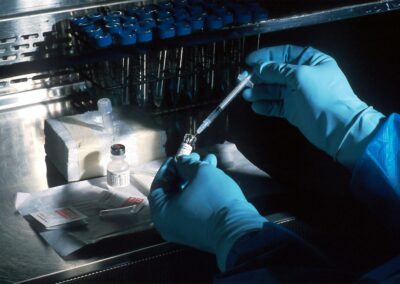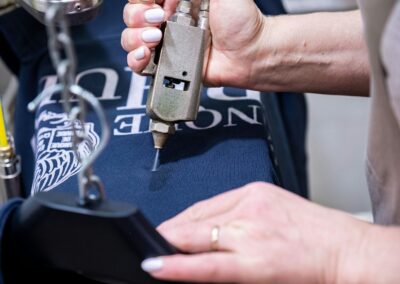The Role of IoT in Promoting Occupational Health and Safety
How IoT-Based Safety Monitoring Improves Worker Health in Industrial Environments
The implementation of IoT-based safety monitoring in industrial environments is revolutionizing how companies ensure the health and well-being of their workers, particularly in regions like Saudi Arabia and the UAE, where industrial sectors play a crucial role in economic growth. By leveraging the power of the Internet of Things (IoT), companies can now monitor safety conditions in real-time, providing a proactive approach to risk management and significantly reducing workplace incidents. This technology is vital in industries such as oil and gas, manufacturing, and construction, where hazardous conditions are a constant concern.
IoT-enabled devices, such as wearable sensors, environmental monitors, and connected machinery, continuously collect data on various safety parameters, including air quality, temperature, noise levels, and worker movements. This real-time data allows safety managers to identify potential hazards before they become critical. For example, in an oil refinery in Riyadh, IoT sensors can detect gas leaks or extreme heat, alerting workers and supervisors to take immediate action. This capability not only prevents accidents but also ensures that workers are operating in a safe environment, thus enhancing their overall health and well-being.
Moreover, IoT-based safety monitoring supports a more personalized approach to worker health. Wearable devices can track vital signs such as heart rate, body temperature, and fatigue levels, providing insights into an individual’s physical condition. In Dubai’s fast-paced construction sector, where long hours and physically demanding tasks are common, these insights are invaluable for preventing overexertion and ensuring that workers receive timely medical attention if needed. By monitoring each worker’s health in real-time, companies can tailor their safety protocols to meet the specific needs of their workforce, reducing the risk of injuries and illnesses.
Maximizing the Benefits of IoT-Enhanced Safety Monitoring
The strategic use of IoT-based safety monitoring in industrial environments offers numerous benefits that go beyond traditional safety measures. One of the most significant advantages is the ability to implement predictive safety protocols. By analyzing the data collected from IoT devices, companies can identify trends and patterns that indicate potential safety risks. In industries like petrochemicals or heavy machinery in the UAE, this predictive capability is essential for preventing accidents before they occur. For example, if data shows that a particular machine consistently overheats, maintenance can be scheduled before the issue leads to a breakdown or an accident. This proactive approach not only enhances worker safety but also improves operational efficiency by minimizing downtime.
Another key benefit of IoT-enhanced safety monitoring is the ability to foster a culture of safety and well-being within the organization. With continuous monitoring and real-time feedback, workers become more aware of the importance of adhering to safety protocols. In Saudi Arabia, where the industrial sector is expanding rapidly, this awareness is crucial for maintaining high safety standards. IoT technology can also facilitate training programs by providing data-driven insights into common safety violations or near-miss incidents, allowing companies to tailor their training efforts to address specific issues and reinforce safe behaviors.
Furthermore, IoT-based safety monitoring contributes to better regulatory compliance and reporting. In highly regulated industries, companies must adhere to strict safety standards and often need to provide detailed reports on their safety practices. IoT technology simplifies this process by automatically recording and storing safety data, making it easier to generate accurate reports for regulatory bodies. In Dubai, where compliance with international safety standards is often required, this capability ensures that companies can meet their obligations without the administrative burden of manual data collection and reporting.
In conclusion, the integration of IoT-based safety monitoring in industrial environments is a powerful tool for improving worker health and safety. By providing real-time data, predictive insights, and enhanced compliance capabilities, IoT technology enables companies in Saudi Arabia, the UAE, and beyond to create safer, healthier workplaces. As industrial sectors continue to grow and evolve, the role of IoT in supporting occupational health and safety will become increasingly important, making it an essential component of any modern industrial safety strategy.
—
#IoTSafetyMonitoring #WorkerHealth #IndustrialSafety #OccupationalHealth #SmartTechnology #RiskManagement #RiyadhTech #DubaiInnovation































